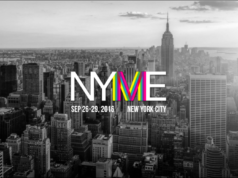 Jeff Gomez is one of the leading figures in a new approach to developing and packaging media properties called "Transmedia." As CEO of Starlight Runner Entertainment, he packages books, comics and graphic novels, and develops video games and
Jeff Gomez is one of the leading figures in a new approach to developing and packaging media properties called "Transmedia." As CEO of Starlight Runner Entertainment, he packages books, comics and graphic novels, and develops video games and
alternate reality experiences with world-renowned partners and clients. On April 25th in Los Angeles, he will, together with Digital Media Wire, host the first of a series of exclusive transmedia workshops. In an intimate setting at the SLS Hotel in Beverly Hills, he will teach a small group of media and marketing executives how to understand understand and leverage the most effective transmedia techniques out there. In this exclusive interview, he shares some of the insights that he will explore in the workshops.
1. First of all, what is Transmedia and does it have anything to do with where Dracula was born?
If
I had a nickel for every Dracula and drag queen joke that’s been winged
my way for the past five years, I’d be able to get my Mom a nice ranch
house just outside of Tampa! Good thing I’m used to being teased since I
was a kid, so it’s water off a duck’s ass.
Actually,
"transmedia" as a word all by itself doesn’t mean that much to me. I use
it as shorthand for "transmedia storytelling" or "transmedia
production." For me, transmedia narrative is a kind of subset of
cross-media content. It’s the technique of conveying messages, themes
and storylines across multiple media platforms in a way that is both
artful and coordinated with care. Different aspects of the story or
story world are created to play to the specific strengths of the medium.
Everyone
talks about Star Wars to exemplify good transmedia, but I love talking
about Glee, because what makes transmedia so unique and relevant is that
it is fundamentally about telling stories to a generation of people who
want to be heard, and who are used to being validated for their
participation. That’s what interactive media is about in essence:
response.
The toughest aspect of getting transmedia right
is that you have to build two-way communication into the apparatus of
your narrative. With iTunes, live theatrical events, YouTube and
Twitter, Glee succeeded in doing just that.
2. If I’m a content creator or work with content creators, why do I need to know about Transmedia?
First
and foremost, transmedia offers new vistas, a wider canvas for
creators. This is an amazing new form of expression that begs us to
think differently about conveying story. I’m not saying this is for
everybody, but some of the most imaginative people I know love to seek
out different ways to share their narratives.
With
transmedia you’re not repeating the same story on a movie screen, a TV
screen, a novel and a videogame. You are using each one to tell a
complete piece of your story, and combined they can all become a deeper,
richer and more immersive experience.
From a business
standpoint, much has been said about how transmedia can help build
franchises and maximize return on investment for entertainment
properties. What’s more interesting to me is that transmedia is ushering
in new powers for content creators and producers. It’s certainly done
so for myself and my company. It offers more control and greater equity
participation, which is warranted because creators of storyworlds robust
enough to be extended across all these platforms are doing plenty of
extra work!
3. Will attendees at your workshops be able to create their own Transmedia Bibles afterwards?
After
four hours with me you’ll know the basics behind how to look at your
storyworld or your company’s intellectual property and "break it" for
transmedia. This includes not just what should go into these Transmedia
Bibles, but how to prepare these texts in ways that will maximize their
effectiveness.
I’m going to teach this to you in plain
English, too, and I won’t be waving four-dimensional graphs at you with a
million concentric circles. This new and really cool, but it isn’t
rocket science. If you don’t get it after I’m done, then I’ll give you
my phone number so we can finish it one-on-one.
4. Which current media properties do you think have done a good job with embracing Transmedia?
Well,
lets get something clear first: a movie of the DOOM video game is not
what I consider to be transmedia. That’s photocopying a property with no
narrative and sketching in a weak narrative on top of it.
On
the opposite end, the Harry Potter and Twilight franchises are
certainly cross-media, and may boast the occasional transmedia element
(plenty of fan participation), but they’re not optimal examples, because
they’re closed systems. Those universes cannot be added to with new
content, because they are closely guarded by their authors.
Besides Glee, I love this generation’s Battlestar Galactica execution, a property from Holland called Spangas, Disney’s Tron (especially what’s coming next for it) and Microsoft’s Halo (but I’m biased as I worked on those last two).
5. Lastly, who is your favorite bad guy character from the movies, and why?
My favorite bad guy in all of cinema is the one who changed my life.
The
first time I saw Fight Club in a movie theater in 1999, I was Raymond
K. Hessel kneeling at the end of the barrel of Tyler Durden’s gun. The
next day I went out and started my business plan for Starlight Runner
Entertainment. If you don’t know what I’m talking about, go and see the
film right now. The greatest villains, man, are the ones who make you
rethink your place in reality.
Jay Baage
Find out more about the Transmedia Workshop on April 25th here.
Connect with Jeff Gomez:
http://twitter.com/#!/Jeff_
http://www.facebook.com/?ref=
Jeff Gomez’ complete bio can be found here.







